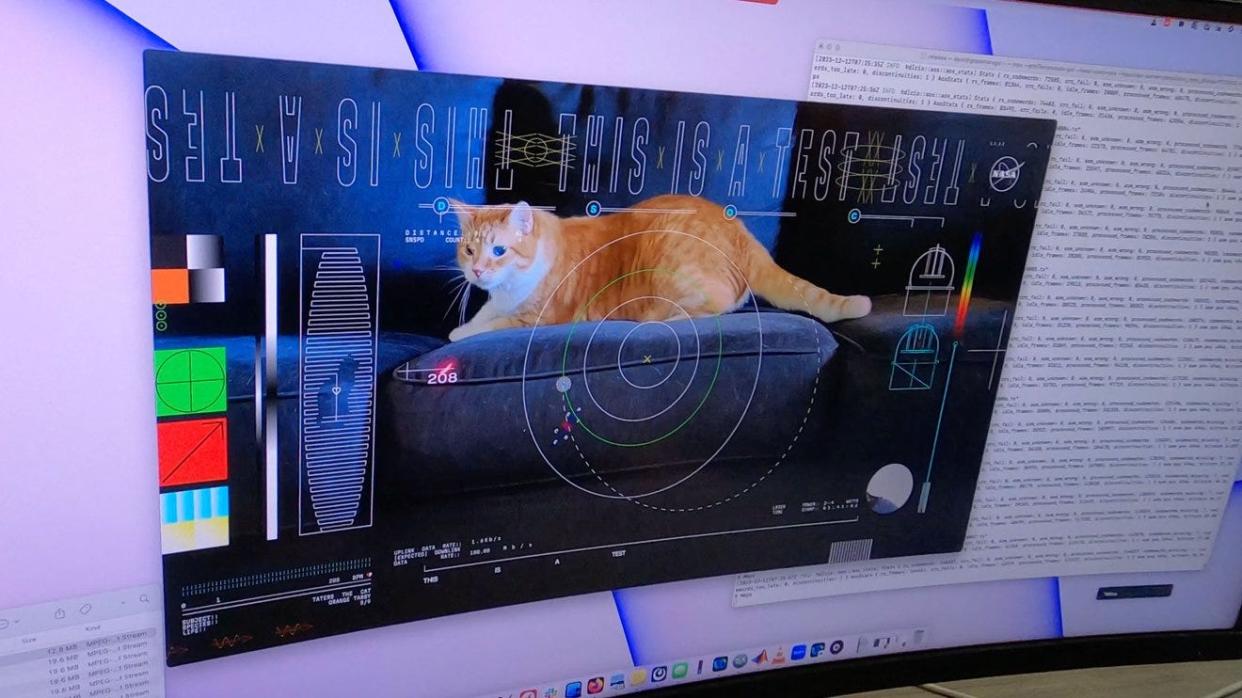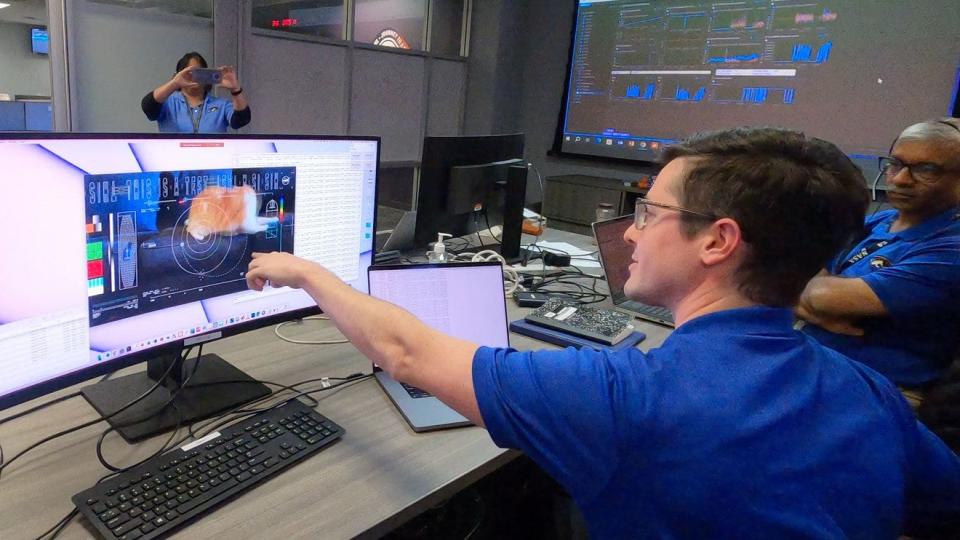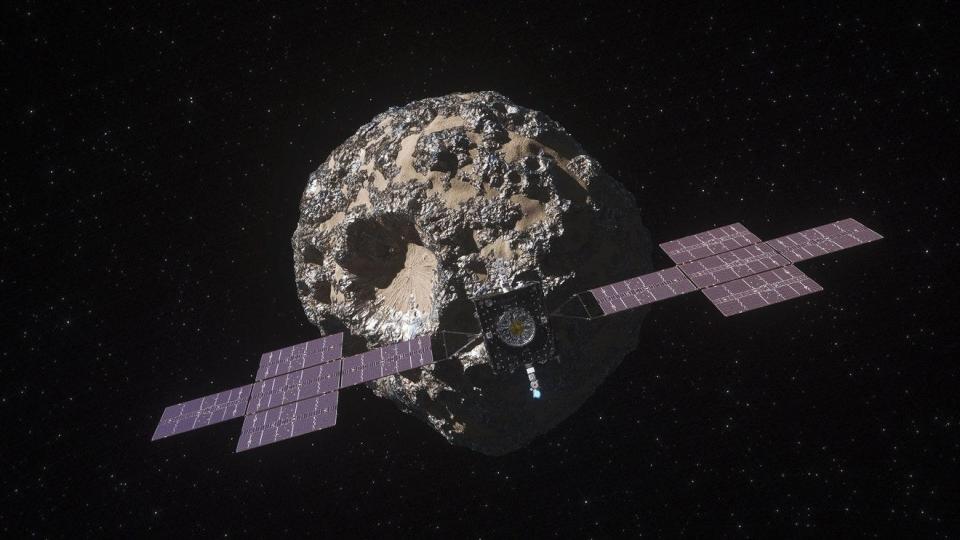Video of a cat named Taters in deep space is being called a NASA milestone: What to know

An orange tabby cat named Taters recently helped NASA make history when a clip of it chasing a laser – what else? – became the first high-definition video beamed to Earth from deep space.
Brimming with adorableness, the 15-second video shared last week on NASA's Jet Propulsion Laboratory's YouTube channel marks an important milestone for the space agency. The ultra-high definition streaming video, stored aboard the uncrewed Psyche spacecraft, was transmitted from a record 19 million miles away.
Scientists at the Pasadena, California, lab hope the experiment will be a breakthrough in their aim to enable future crewed missions beyond Earth's orbit to stream high-bandwidth video.
“Increasing our bandwidth is essential to achieving our future exploration and science goals," NASA Deputy Administrator Pam Melroy said in a statement. "We look forward to the continued advancement of this technology and the transformation of how we communicate during future interplanetary missions.”
NASA's missing tomato: Here's what tomatoes lost for months on the International Space Station looks like
Video of Taters uploaded for Psyche mission

OK, that's all very cool, but what about the cat?
Taters, who belongs to an employee at the Jet Propulsion Laboratory, was recorded playfully chasing a red laser pointer from the safety of Earth for the experiment. The video was uploaded to NASA's Psyche spacecraft, which launched Oct. 13 from the Kennedy Space Center in Florida.
The video signal took 101 seconds to reach Earth after it was transmitted from a distance roughly 80 times the distance from Earth to the moon via an instrument called a flight laser transceiver, which is capable of sending and receiving near-infrared signals.
Once downloaded, each frame of the looping video was then streamed on Dec. 11 in real time at the Jet Propulsion Laboratory, NASA said.
Graphics superimposed over the orange tabby cat showcase several features from the technology demonstration, such as Psyche’s orbital path and technical information about the laser. Tater’s heart rate, color and breed are also on display.
New tech may help for future space missions, including to Mars

As Psyche travels further and further from Earth, NASA is hoping to implement new technologies to replace older radio frequency communications that have reached their bandwidth limit.
The Psyche spacecraft is traveling on a six-year, 2.2 billion-mile journey to the asteroid belt between Mars and Jupiter, where it is ultimately bound for a metallic asteroid of the same name. Scientists hope that by studying the distant asteroid, believed to be a partially exposed planetary core, they'll learn more about Earth's own unreachable core.
That will require the ability to transmit complex high-definition images and video, which will significantly increase the required bandwidth. NASA's recent video experiment was to test its new Deep Space Optical Communications system, which consists of a flight laser transceiver, a ground laser transmitter and a ground laser receiver.
Designed to transmit data from deep space at rates 10 to 100 times greater than the radio frequency systems used today, the new system is intended to be better equipped to accommodate the massive amounts of science data expected to be transmitted on future space missions – such as ones to Mars.
And if the results of Taters' video are any indication, the system is showing promise.
“Despite transmitting from millions of miles away, it was able to send the video faster than most broadband internet connections,” Ryan Rogalin, the project’s receiver electronics lead, said in a statement.
Eric Lagatta covers breaking and trending news for USA TODAY. Reach him at elagatta@gannett.com.
This article originally appeared on USA TODAY: Taters the cat helps NASA make history in video from deep space

